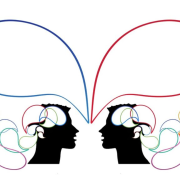
If you’re battling addiction, mindfulness techniques can be a valuable tool in overcoming cravings and achieving lasting change. By bringing conscious awareness to your thoughts, emotions, and physical sensations, you can develop a greater understanding of the triggers behind your cravings. And learn to respond to them in a healthier way. For instance, through mindfulness-based practices such as deep breathing, meditation, and body awareness. You can cultivate a sense of calm and centeredness that strengthens your ability to resist impulsive urges.
Understanding Cravings In Addiction Recovery
Cravings are a common phenomenon experienced by individuals in addiction recovery. They have a strong urge to engage in a particular behavior or consume a substance. Moreover, cravings can be due to various factors, such as stress, environmental cues, or emotional states. Understanding the nature of cravings is crucial to effectively managing them.
Cravings and Dopamine
Cravings are often linked to the reward system in the brain. Specifically the release of dopamine, a neurotransmitter associated with pleasure and reinforcement. For instance, engaging in addictive behaviors, such as substance abuse or compulsive eating, our brain’s reward system is activated. Consequently, this leads to a surge of dopamine. Over time, this creates a strong association between the behavior and the pleasurable feelings it produces. Making cravings more likely to occur.
To overcome cravings, it is essential to recognize and acknowledge their presence. Mindfulness can help in this process by bringing conscious awareness to the sensations and thoughts associated with cravings. By observing cravings without judgment or resistance, you can begin to understand their underlying causes. This will help you develop strategies to manage them effectively.
The Role Of Mindfulness In Managing Cravings

Mindfulness techniques are a practice that involves fixating on the present moment with an attitude of curiosity and acceptance. It allows us to become more aware of our thoughts, emotions, and physical sensations without getting caught up in them. By practicing mindfulness, we can create a mental space. One that allows us to respond to cravings in a conscious and intentional way.
One of the benefits of mindfulness is the ability to cultivate a sense of detachment from our thoughts and desires. Rather than identifying with our cravings and allowing them to control our actions, mindfulness helps us observe them as passing phenomena. This shift in perspective allows us to respond to cravings from a place of choice and empowerment, rather than succumbing to them impulsively.
Mindfulness techniques also enhances our ability to tolerate discomfort and urges without immediately seeking relief. Through regular practice, we develop resilience and the capacity to sit with uncomfortable feelings, knowing that they will eventually pass. This resilience is crucial in managing cravings, as it enables us to ride out the wave of desire. One that’s without giving in to impulsive behaviors.
Mindfulness Techniques For Managing Cravings
By practicing mindfulness, we can create a mental space that allows us to respond to cravings. One that is in a conscious and intentional way. Some popular mindfulness techniques include:
- Deep breathing exercises: Deep breathing exercises are effective despite looking simple. Deep breathing can help you stay grounded and present when cravings arise. Find a couple of moments to adjust your breath. Inhale while breathing through your nose and exhale slowly through your mouth. Notice the sensations of your breath as it enters and leaves your body. Allowing it to anchor you in the present moment.
- Body scan meditation: Body scan meditation is a practice that includes thoroughly bringing attention to various parts of your body, from head to toe. This technique helps you cultivate a deep awareness of your physical sensations, which can be particularly useful when cravings manifest as bodily discomfort or tension. As you scan your body, observe any sensations without judgment, allowing them to be as they are.
- Mindful eating: Mindful eating involves the practice of being fully attentive to the experience of eating, from the moment the food enters your mouth to the act of swallowing. By savoring each bite and noticing the texture, taste, and smell of the food, you can build a greater sense of satisfaction and reduce the tendency to overeat or indulge in unhealthy cravings. Mindful eating also allows you to tune in to your body’s fullness cues and hunger, helping you to make nourishing choices.
- Mindfulness-based stress reduction (MBSR): MBSR is a practice which is a combination of mindfulness yoga, meditation, and body awareness to help individuals manage stress and enhance well-being. By participating in MBSR, you can learn valuable techniques for managing cravings in a supportive and structured environment. MBSR has been shown to be particularly effective in reducing stress-related cravings and improving overall mental health.
How to Integrate Mindfulness Into Your Daily Life

While formal mindfulness practices such as meditation and body scans are beneficial, it is equally important to integrate mindfulness into your daily life. Here are some practical ways to cultivate mindfulness throughout your day:
- Mindful moments: Take a few moments throughout the day to pause, breathe, and bring your focus to the present moment. Whether it’s while waiting in line, walking in nature, or sipping a cup of tea, these mindful moments can help you stay connected to yourself and reduce the likelihood of cravings.
- Mindful movement: Engage in physical activities that allow you to be fully present in your body, such as yoga, tai chi, or walking meditation. By combining movement with mindfulness, you can enhance your overall well-being and strengthen your ability to manage cravings.
- Mindful communication: Practice mindful listening and speaking in your interactions with others. By giving your full focus to the person speaking and responding with intention and kindness, you can foster deeper connections and reduce the likelihood of engaging in impulsive behaviors driven by cravings.
Mindfulness techniques can be powerful tools in managing cravings on your path to recovery. By bringing conscious awareness to your thoughts, emotions, and physical sensations, you can develop a greater understanding of the triggers behind your cravings and learn to respond to them in a healthier way. An intensive outpatient program can help those in early recovery build their mindfulness technique toolbox to better manage cravings during triggering situations.
Remember, incorporating mindfulness into your recovery journey is a process that takes time and practice. Be patient with yourself and celebrate even the smallest victories along the way. With dedication and perseverance, you can rewire your brain, break free from the cycle of craving and temptation, and cultivate a life of balance, joy, and well-being, one conscious moment at a time.
Read Also:











